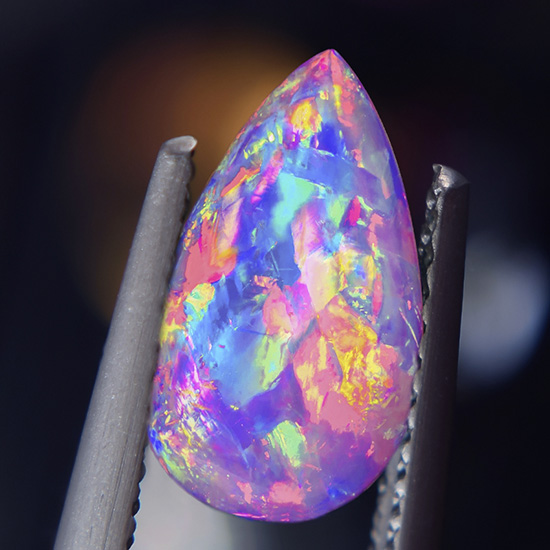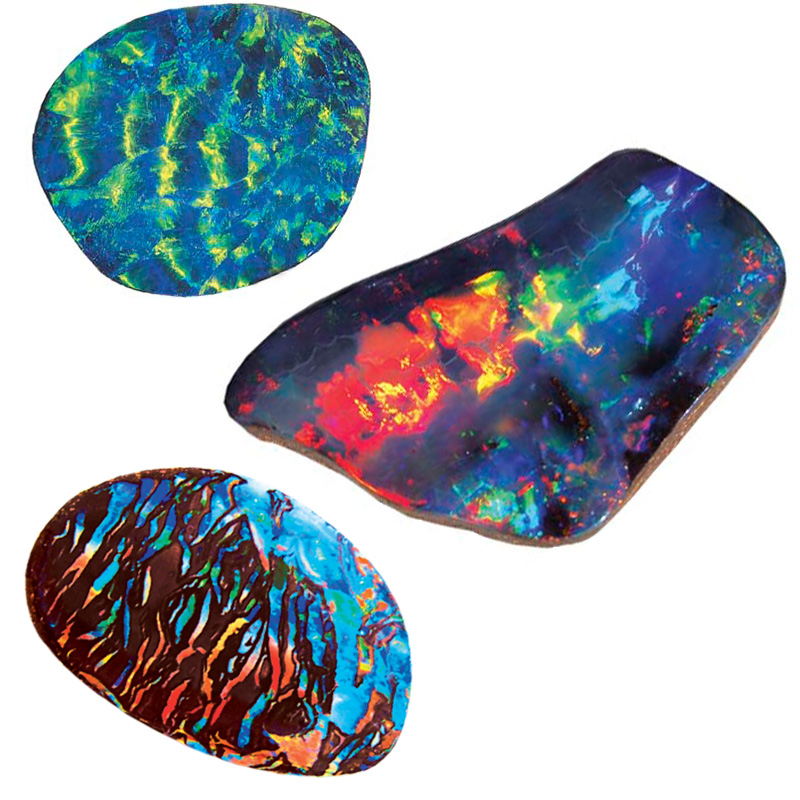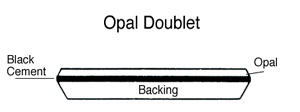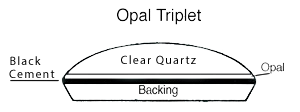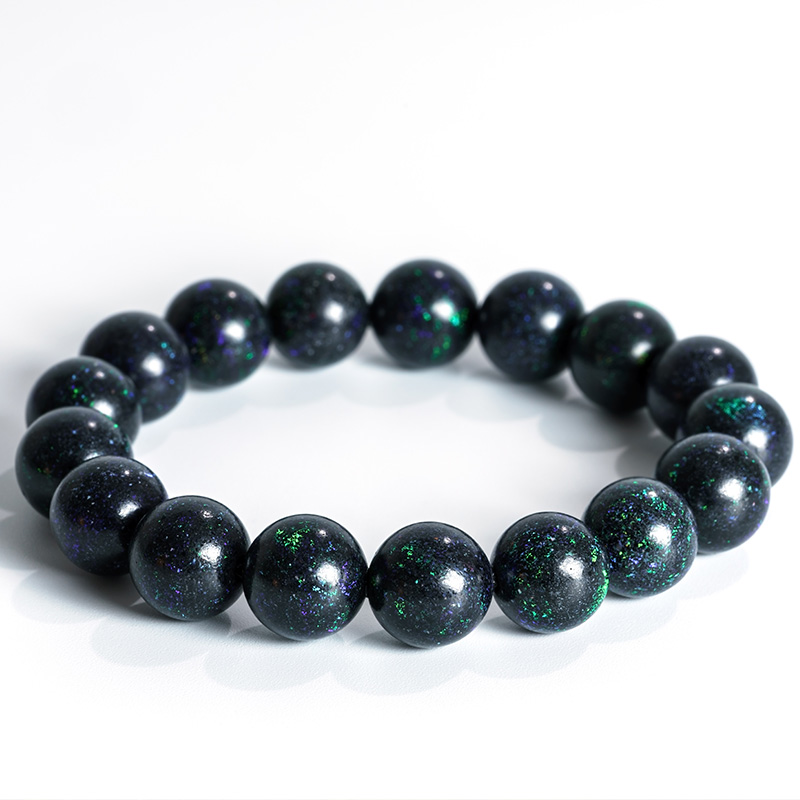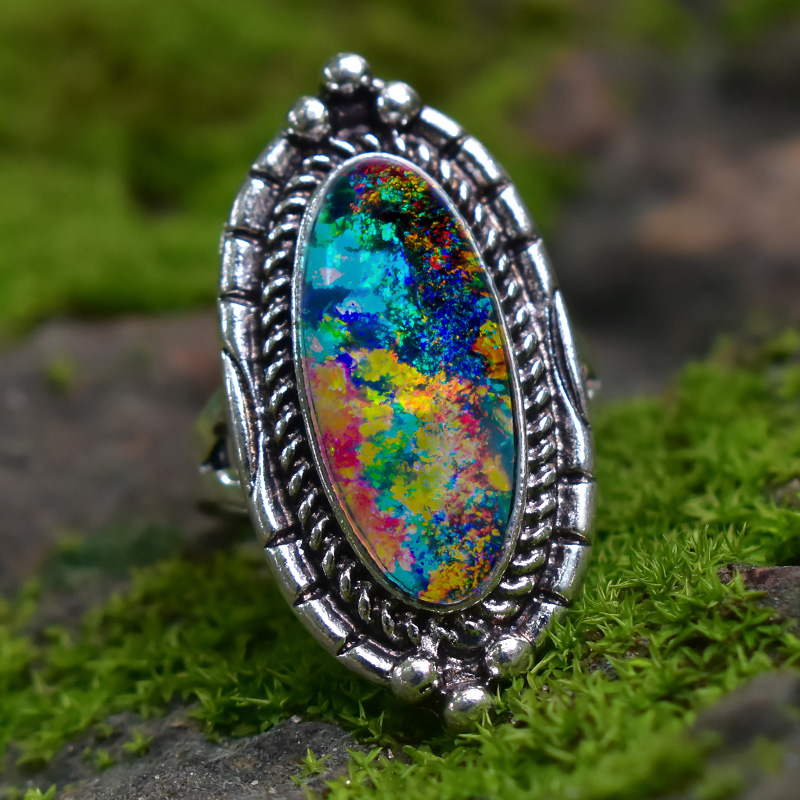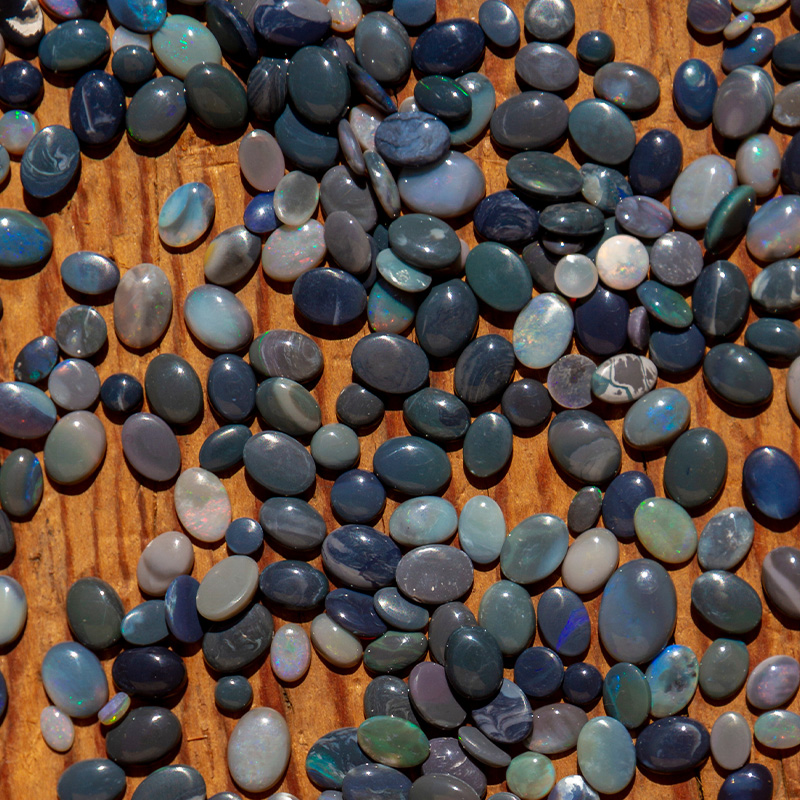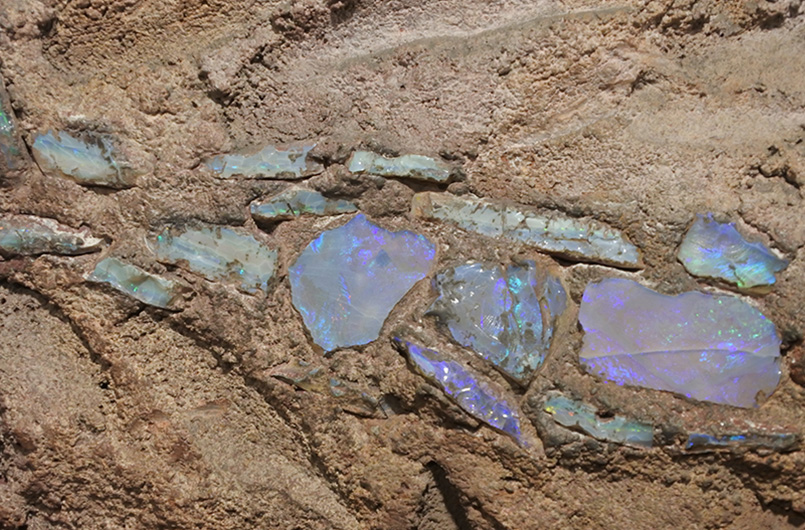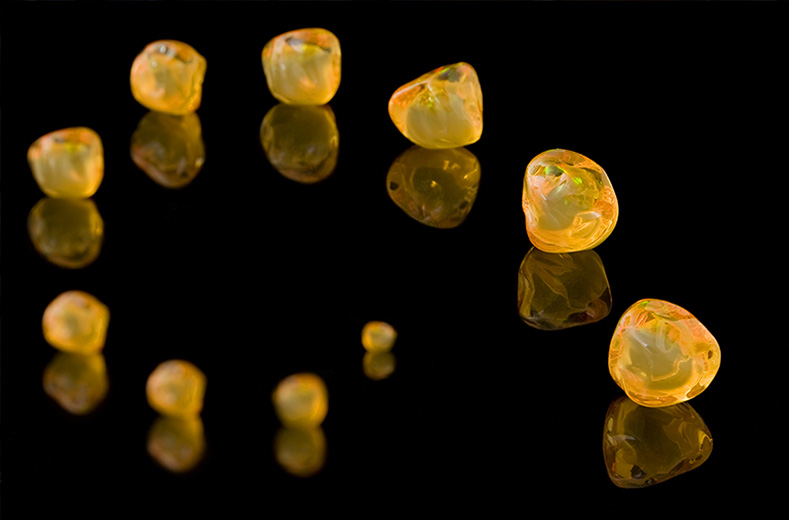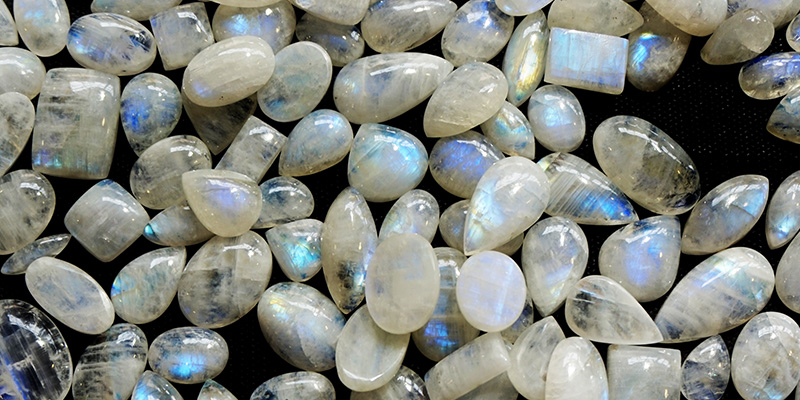Precious Opal
Precious Opal presents a “play of colour” along its surface. This “play of colour” determines whether an opal is precious or common. Flashing with iridescent colours when viewed from different angles, when the light source moves, or the stone itself moves. These flashes are known as the opals “play of colour” and can come in a multitude of colours, such as indigo, purple, blue and green, from lower wavelengths of light passing through the stone. To yellow, orange and red from the higher wavelengths passing through. The “Play of colour” opals have is what makes them a popular and unique gemstone. With the higher wavelengths being of considerable value.
Common Opal
Common opal is found worldwide and does not possess a “play of colour” like precious opal. Because of this, it doesn’t attract the same attention as precious opal. Although common opal presents no play of colour, it can be vividly colourful. The stone will accept a high polish such that some forms of common opal are still highly sought after.
Body Tone
The body tone of an opal refers to the relative darkness of the opal, ignoring its play-of-colour an assessed on a Scale of 1-9.
Vividness
How the colours appear impacts the value of an opal greatly. With the best stones shining brilliantly in any lighting conditions.
Colour
Precious opal can display the entire visible spectrum of colours. The most common colours being blue and green, with red being the rarest.
Pattern
The pattern of opal can dramatically increase its desirability. with the harlequin pattern being the rarest.
Inclusions
The natural process that forms opal causes inclusions to appear when cutting the piece. Sand spots appear within or on parts of the opal that can affect the desirability and value of the piece.
Colourless Areas
As opal forms, some areas may not align into uniform rows correctly, and this will produce common opal alongside precious opal. This is then used to create stunning patterns that enhance the value of the overall piece.
Fractures
Fractures can appear within unstable opals and may cause the stone to break from the temperature simply changing. Luckily Australian opal is generally very stable and so is not prone to suffer from fractures.
Types of Natural Opal
Natural opal is untreated or enhanced in any way other than cutting and polishing.
Whole
Presented as a single homogenous piece in its natural state apart from cutting or polishing.
Attached
Presented fused with a host rock where there is a different chemical composition between the two parts.
Diffused/Infilled
Presented where the opal is intimately diffused throughout a host material infilling pores, holes or between grains.
Composite Natural Opal
Composite natural opal consists of opal laminates, manually cemented or attached to another material. There are three main forms of composite opal: doublets, triplets and synthetic opals.
Synthetic and Treated Opal
Synthetic Opal
Synthetic opal, or Opaline Silica, is produced in a laboratory attempting to mimic the natural process that forms precious opal. With bright colours in regular patterns, synthetic opal is easily identifiable from naturally formed opal. Other methods of imitating opal include embedding coloured tinsel into clear resin or plastic.
Treated Opal
There are many ways to treat opals. However, almost every form of treatment will drastically reduce the value of the piece. Methods to treat opals include smoking them or acid bathing the pieces.
Australian Opal Types
Precious Opal
Black Opal
Black Opal is mainly found in Lightning Ridge Australia and was first recorded in 1873.
It is the most valued of all opals with a distinct block body tone or base that distinguishes it from all other types of precious opal.

Dark Opal
Dark opal is a precious opal that has an N rating of 5-6. With a dark grey base and is quite valuable.
Light Opal
Light opals have an N rating of 7-8 and are the most common form of precious opal along with white opal.
As they are so common they hold some of the least value out of all precious opal types, although a great specimen of light or white opal will still demand a higher value than a lesser black opal.
White Opal
White or Milky opal is a precious opal with a white to pale-grey base (N9) and is the most common form of precious opal. Coober Pedy is reknowned for its spectacular white and light opal, producing large quantities each year.
Boulder Opal
Boulder Opal is mainly found in Central Queensland Australia.
It is renowned for its unique patterns with notable pieces coming from Koroit and Yowah.
Crystal Opal
Opal shows all forms of diaphaneity that range from transparent to opaque. Precious Opal that is semi-transparent to transparent is known as crystal opal, it can have either a black, dark or light body tone.
Fossil Opal
As opal forms, there is a possibility that it will replace minerals in shells, bones and other organic materials taking on and retaining the shape. Because of this, some spectacular examples exist such as opal pineapples from White Cliffs, NSW and Eric the opalised Pliosaur.
Common Opal
Potch Opal
Commonly found while mining for precious opal, potch opal comes from many regions and in many colours. Potch opal can be cut and polished to produce beautiful and unique patterns, while some will present sun flashes.
ACKNOWLEDGMENTS
REFERENCES
- Opal Association
- Altman, J.D. (1979) Suggestions for nomenclature of opals. Australian Gemmologist. 13(12), 383-385.
- Clayton, N.A. (1975) Classification and nomenclature of precious opal.Australian Gemmologist. 12(5), 152-154.
- Darragh, P.J., Gaskin, A.J., and Sanders J.V. (1976) Scientific American, 234(4), 84-94.
- Editorial Committee of The Australian Gemmologist (1971)
- Some thoughts on opal. Australian Gemmologist. 11(2), 24-26.
- Geological Society of America (1991) Rock-color chart. GSA: Boulder, Colorado.
- Haugen, S.O. (1987) A system for evaluation of opal. Australian Gemmologist. 16(6), 213-215.
- Herbert, P., Hearnes J., and Males, P.A. (1972) Opal nomenclature discussion.Australian Gemmologist 11(5), 23-24.
- Jones, J.B. and Segnit, E.R (1971) The nature of opal – Opal nomenclature and constituent phases. Geological Society of Australia. 8(1), 57-68.
- Kalokerinos, A. (1971) Black opal nomenclature. Australian Gemmologist 11(4), 16.
- Munsell, A.H. (1961) A colour notation. Munsell Colour Co: Boston, USA.
- New South Wales Opal Research Group (1971) The classification of black opal. Australian Gemmologist. 11(2), 24.
- Sanders, J.V. (1983) A proposal for the classification of opal. Australian Gemmologist. 15(3), 75-78.
- Sherman, G. (1983) Certification of opal. Australian gemmologist. 15(3), 71-74
- Wyszecki, J. and Stiles, R. (1982) Colour Science.Wiley: New York.
- Purchase the Rock-color Chart from The Geological Society of America, P.O. Box 9140. Boulder Colorado 80301 (for US$26.00, plus postage), or from
- Prospectors, P.O. Box 339, Seven Hills NSW 2147 (for $A48.00).
